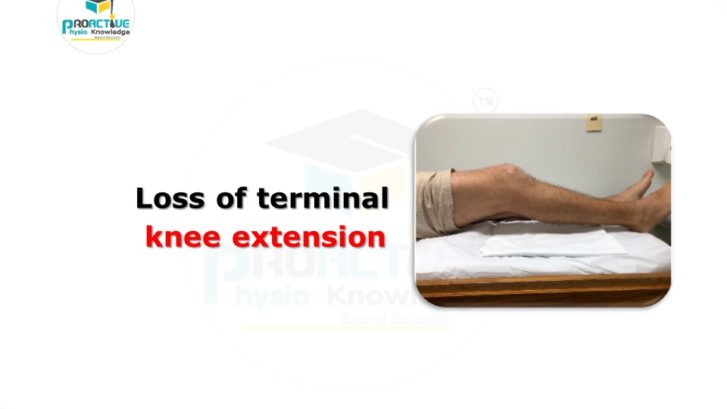Loss of terminal knee extension Part 1
Post operative status of knee joint, we quite oftenly see loos of terminal knee extension. We routinely approach for VMO strengthening and electrical stimulation to VMO, Exs. However, we do not get optimal result during gait cycle.
Functioning/playing without full knee extension motion can cause problems not only at the knee joint but also up & down the kinetic chain. if the knee can’t fully extend, then the ankle and hip have to compensate and will have a hard time to generate the appropriate force. Hence, here we provide you detail on movement system framework .
When patient fails to do heel strike, there is knee flexion during initial heel contact to the ground so there is more ankle dorsiflexion. Due to excessive dorsiflexion anterior compartment needs more strength to stop quick progression of forefoot movement. Now whole kinetic chain get disturbed by not achieving full extension knee at heel strike. Eventually, pronation occurs more quickly, more abrupt quadriceps loading.
By not having full knee extension, the quadriceps is short and it may increased patellofemoral compression(consider their clinical symptoms). Now the distal joint needs to compensate when lower limb fails to complete heel stike to foot flat phase of gait.
Hip joint is in flexion position on initiation of stance phase (consider their clinical symptoms), Which may lead to more anterior pelvis tilt and thus increased lumbar lordosis. Lack of hip extension create more rotation on lumbar spine. Gradually micro movement occurs at lumbar levels and tissue get inflamed. So this compensation add another pathology.
Flexed knee means that the leg is shorter apparently which will through off pelvis symmetry . Due to pelvis asymmetry opp gluteus muscles has to work more(Posterior oblique system affected).There is loss of flexibility of calf muscles so leg fails to generate push off force which leads to loss of hip extension pattern on both sides and stride length also decreased.
Inadequate hip extension on affected side can create premature heel raise. Body required stability to complete gait cycle therefore arm swing altered on both side. Usually we see no movement in arm while walking. Inhibition of arm swing which can create e more thoracic rotation to clear ground. (and of course the cervical spine sits on top of that) etc, so consider their clinical symptoms.
Finally, we should not focus only to gain knee extension but we should correct distal joint movement also. From above dysfunction we understand how fast our brain must juggle things, otherwise your examination is going to be knee-centered and tunnel visioned. Keep in mind, your client may not even have knee complaints, perhaps one or more of the above. But this is a perfect example of why you must examine the WHOLE client.




Leave a Reply
Want to join the discussion?Feel free to contribute!